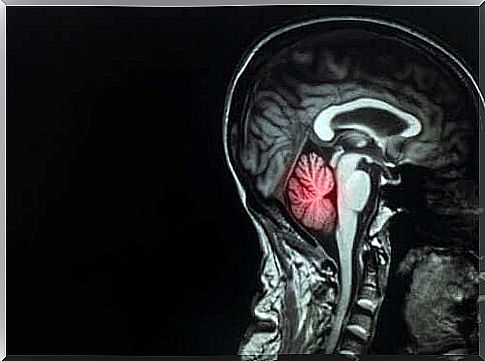Brain Metastases: Description And Treatment Of This Disease

Brain metastases are the most common types of brain tumors. They are quite a challenge for doctors. In fact, they make up about 90% of all brain tumors.
Medical estimates show that 10 to 40% of cancer patients of any type also have brain metastases . This is due to the fact that their incidence is increasing, taking into account the higher average survival time of cancer patients thanks to modern oncological therapies.
Neoplastic tumors have a different ability to metastasize the brain and to penetrate the blood-brain barrier. Especially considering that this barrier is used by the human body to shield and protect the brain.
Metastasis to the brain and other organs of the body is the hallmark of all cancer cells. They rely on the ability to invade both adjacent and distant tissues to the primary tumor. This means that cancer cells are free to migrate to other parts of the body and cause different types of cancer in them.
Brain metastases and its causes
Brain metastases usually occur as a result of haematopoietic spread. This is because the neoplastic cells of the primary tumor enter the bloodstream, travel through the bloodstream to the brain and spread unhindered.
In this connection, it is worth noting that the distribution characterizing metastases to the brain is directly proportional to the blood flow in a given area of this organ. Overall, brain metastases have the following percentages for their incidence:
- 80% of neoplastic changes occur in the brain
- 15% of changes occur in the cerebellum
- 5% of the changes occur in the brain stem
The first step for cells to spread throughout the brain is to invade the artery wall at the level of the first primary tumor. In this way, some cancer cells can pass through it and, as a result, enter the bloodstream.
Then the cell or cells that have entered the bloodstream must be able to adhere to the vessels of the brain by crossing the natural blood-brain barrier.
The blood-brain barrier and the absence of the lymphatic system provide the brain with effective protection against the entry of many drugs and microorganisms. Ultimately, however, they cannot prevent certain types of cancer cells from entering.
How does cancer cells cross the blood-brain barrier?
Experts say that the mechanisms used by cancer cells to cross the blood-brain barrier are truly worth investigating and learning. However, to this day, they have managed to show that there are at least two mechanisms favoring this undesirable process:
- Paracellular level. This means creating a ‘gateway’ between the cells that make up part of the blood-brain barrier. For this to happen, cancer cells must destroy the existing connections between cells that make up the blood-brain barrier. This, in turn, entails the need for certain types of proteins and inflammatory mediators.
- Transcellular level. This mechanism simply causes the direct death of the barrier cells. As a result, cancer cells can more easily cross the blood-brain barrier.
What happens in our body after crossing the blood-brain barrier?
Once the cancer cells are in our brain, they move on to the microcirculation system in this organ. And from there they become extravasated, that is, they just head directly towards the tissues.
The survival and proliferation of the cervical cells from this point on depend solely on the ability to maintain an adequate supply of oxygen and nutrients. And that explains why these malignant cells stay very close to the blood vessels all the time.
Brain metastases – what are the treatments available?
With conventional treatment, if the patient experiences a headache, start the diagnosis process with MRI or CT scans. This examination is designed to exclude potential complications requiring surgical intervention.
Regarding the specific treatment of brain metastases, we can list the following options here:
- Segmental resection. The method consists in removing the tumor using small, precise incisions. The process is performed through a vitrectomy and has a number of advantages, such as the ability to remove the mass effect, eliminate the source of the edema, and improve the overall likelihood of survival compared to intracranial radiation alone.
- Intracranial radiotherapy. Historically, this method has been considered the best therapy when the tumor has a large volume. It is also useful as an adjunct to surgical treatment, significantly reducing the rate of relapses following resection.
- Stereotactic radiosurgery. This method is based on targeted irradiation of the tumor with rays. It has been shown to have a better survival rate and a lower likelihood of recurrence in patients with injuries. It can also be better controlled, but there is no significant difference in survival in people with 2 or 3 cancers.
- Chemotherapy. Brain metastases are usually quite resistant to chemotherapy. However, the integration of new therapeutic alternatives such as targets and inhibitors of immune checkpoints has intensified research in this field.
A few words to summarize our today’s article
Brain metastases account for approximately 90% of all cancers of this organ. Therefore, it is imperative that the diagnosis is made as early as possible in order to try to stop the progression of the disease.
Today, there are many different treatments available and their prognosis continues to improve. However, brain metastases are a very aggressive type of cancer and there is still much to be researched and discovered in this particular area.
Thank you for taking a few minutes to read our today’s article!









